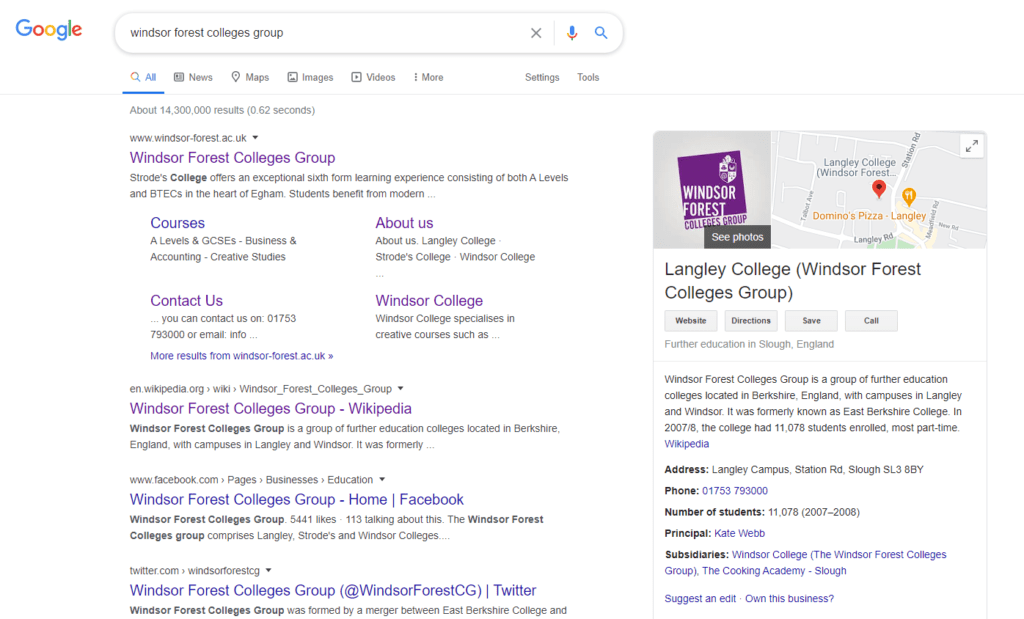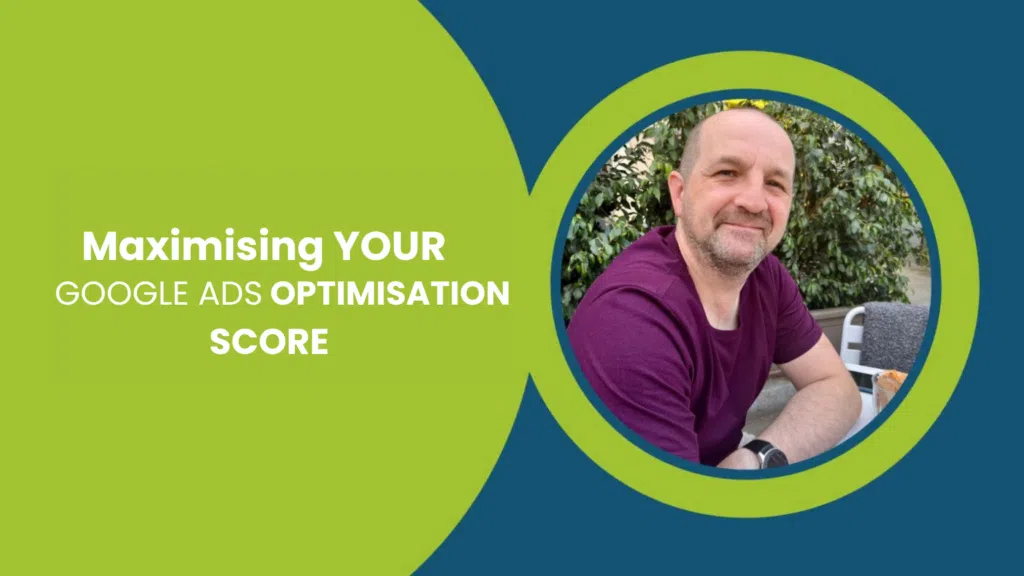When you’re looking for information, where’s the first place you go? Your answer is most likely a search engine. It’s exactly the same for prospective students looking for a suitable course. So how do you get your institution to appear above all the others? For your colleges the answer is SEO.
Search engine optimisation could be the key to beating your competitors to the top positions on search engine results pages. The benefits you get from this are astronomical. Over 25% of searchers click on the first organic result on Google, and only 0.78% of people will click on a link on the second page.
But what is SEO, and why is it so important for colleges? Within this article, we discuss both questions and let you in on some SEO secrets that will give you the best shot at the prized top position.
What is SEO?
Simply put, SEO is how you increase the quality and quantity of traffic to your website through organic results. You’re not paying to appear higher on the search results pages – that’s what PPC is for. Instead, you’re using the search engine’s algorithm to push you further up the rankings.
SEO isn’t just a simple task you can do once and be done with, though. It’s a combination of actions that need constant tweaking and refining. It involves page optimisation, technical optimisation of your website, content, backlinks, page speed and more. That’s why some people outsource the work to an SEO agency with the expertise to do the job well.
Why is SEO important for colleges?
We all know the world is becoming more digital. Online has become an important part of student recruitment, and colleges that haven’t adjusted need to do so.
However, colleges do face their own SEO challenges. Their websites are often managed by different course administrators, department heads and marketing teams, meaning there’s more than one person taking control of SEO. If there’s no unified effort, it takes longer to achieve results, if they manage to make any headway at all.
Despite the challenges, there are things you can do to bring your SEO efforts back under control. Here are ten of the best actions you can take, and how to do them.
Important Tips for your College’s SEO
1. Define your goals
Do you know what you want your end result to be? Are you after more brand recognition, open-day applications or more course enrolments? If you don’t know what your goal is, you can’t make a concerted effort to get there.
Take some time to brainstorm, and then create a SMART target. This needs to be something that is:
Specifically, like double the number of applications
Measurable
Achievable
Relevant
Time-bound
For example, you might want to double the number of attendees on your next open day. You may even try to achieve a 50% increase in applications, or boost the enrolment numbers for a specific course.
2. Perform an SEO audit
Before you can start implementing any strategies, you need to know what’s stopping your pages from attracting more organic traffic. This is where an SEO audit comes in. It tells you what you’re doing well and where you could improve.
Many SEO agencies offer audits, so they can be a good place to start, especially if you don’t have much SEO experience or the software to do this easily. They’ll also take a look at your competitors to see what they’re doing so you have a more complete view of what’s happening in your sector.
3. Improve your Page Speed
If your website loads too slowly, you’ll lose potential students before they have had time to read through your course pages or find out about your student enrichment activities. A one-second delay will cost you 7% of your conversions. To get users to stay on your site, it needs to load fast.
This can be difficult for colleges, but there are many ways to do this. You can find out what you need to focus on by using free tools like Google’s PageSpeed Insights and GTmetrix. For starters, separate your JavaScript and CSS, and make the most of lazy loading. Remember to optimise your images, too; use the right file types and scale them down before you upload them to your website.
If this is all Dutch to you, get in touch with your web developer or contact an agency.
4. Make your Website Mobile-Friendly
Up to 70% of website traffic comes from mobile devices, so it’s more important than ever to check that your site is ready. If your website doesn’t display correctly on a mobile phone or tablet, potential students will leave and head to one of your competitors. You’ll also find your rankings slipping, especially when Google’s mobile-first indexing comes into force in March 2021.
So what can you do about it? First and foremost, make sure your design is responsive. By this, we mean that the layout gets altered depending on the size of the user’s device. You should also make your site easy to navigate. Can users get from one page to another easily? If not, reconsider your menus and make sure you have a search field. The last thing you want is for students to be unable to find the information they need to make a decision.
5. Link Building
Linkbuilding is something that often confuses people, but it’s actually quite straightforward. These are the types of links you need to be aware of:
Internal links, which, as the name suggests, are links on your site that direct users to other pages on your site
External links, which take users to a different website
Backlinks, which are links on other sites that direct users to a page on your website
As well as sending users around your site, they also do the same with search engines. This can improve your rankings and help search engines crawl and index new pages.
Internal and external links are easy to take care of. They can be placed in blog posts and course pages to direct users to similar or useful content.
Backlinks seem difficult to get, but they don’t have to be. Local citations, like having your college listed on online directories, is a great place to start. You can also do some outreach to see if anyone would be willing to link to you on their website. If you have affiliations with other institutions, that’s a great place to start. You can also promote your courses and events on local websites.
Whatever method you choose, try to vary the pages others are linking to. You don’t want everyone being directed to your homepage. Get links to specific courses, staff pages or blog posts.
6. Sort out your page URLs
You’ve clicked on a link, and the page’s URL is www.college.com/course/123456. How do your potential students know what the page is about? More to the point, how do search engines?
Every URL on your site should be optimised. If the address above goes to your history course, for example, it should be www.college.com/course/history. Search engines and users know exactly where they are on your site – and a potential student may even remember it and come back later.
It’s good practice to use keywords to optimise your URLs. This signals to search engines what the page is about. However, be cautious about using too many keywords – this is called stuffing, and it could see you penalised.
7. Getting to grips with Keywords
If you want to optimise your copy, whether it’s on a course page or in a blog post, you need keywords. They’re the words and phrases that users type into search engines to find your pages.
There are plenty of free tools for keyword research, including Google Ads and Google Search Console. Just be sure not to cannibalise keywords – every page and blog post should be optimised for different terms to avoid competition with yourself.
Your landing pages will probably use what we call fat-head keywords. These are short, broad terms like ‘engineering degree’ and ‘midwifery course’. Blog posts, however, should be optimised for long-tail keywords, which are longer, more specific phrases. These could include ‘why choose to engineer’ or ‘mental health at colleges.
Make sure to check your keywords on Google Trends, too. This way you can see if there are any patterns when people are searching for a course.
If your course name isn’t commonly known – like ‘Ancient, Classical and Medieval Studies’ – you can still optimise the page for the more common term. In this case, including ‘history’ in titles, body text and image alt text will be a great help. You should also use any unique selling points you have, like online classes, distance learning and part-time courses.
8. Create Unique Content
Blogs are a great way to bring searchers to your college’s site with SEO. Make posts that are relevant to your target audience and provide value, and keep promoting them on your social channels and in email marketing.
The more blog posts you produce, the better you’ll rank. Search engines like fresh content. And remember: it doesn’t all have to be text. Create visuals, videos and audio to attract prospective students. You could conduct some interviews with current students, or do a video tour of your campus.
Share your content on social media to drive traffic to your website. Branded links are great for this as they help you to build brand awareness.
9. Optimise Non-Text Page Elements
SEO isn’t just what you can see on the page. There are behind-the-scenes parts you need to do to your images and more.
Let’s start with images. We’ve already discussed that they need to be the right size, but you also need to optimise their names and alt text. Use your page’s keywords to help with this, and check out some examples if you get stuck.
10. Don’t Forget Local SEO for your College
Everything we’ve discussed so far has been very general, but what should you do if you’re trying to attract local students? This is where colleges need to start looking at local SEO.
The first step is claiming your Google My Business profile if you haven’t already. It’s free, and a great way to always appear on the search results page for branded terms.

You should also have your address visible on your website – the footer is the optimum place for this. All of this will help you appear in what’s called the local pack, the map that appears when you end a search with ‘near me’. This is perfect for attracting local students. We can also help with local SEO!
SEO Takes Time
There’s no one-size-fits-all approach to SEO (however much we wish there was). Some colleges will need to focus more on their keywords and content, while others may find they benefit more from local SEO. Keep measuring your success against your goals to check you’re heading in the right direction, and don’t be afraid of tweaking your approach.
Most importantly, SEO won’t push you up the rankings overnight. It takes some time for your changes to pay off, but it’s a sustainable way to earn more traffic without spending a penny if you’re carrying it out in-house. If you don’t have the time or the expertise, find an agency that specialises in SEO for colleges. In the end, it’ll be well worth the effort.
Are there any tips that have particularly helped your SEO? Let us know in the comments or tweet us @TeamTillison. In the meantime, take a look at our related SEO training courses so you can learn how to get better results for schools, Colleges and Universities.







